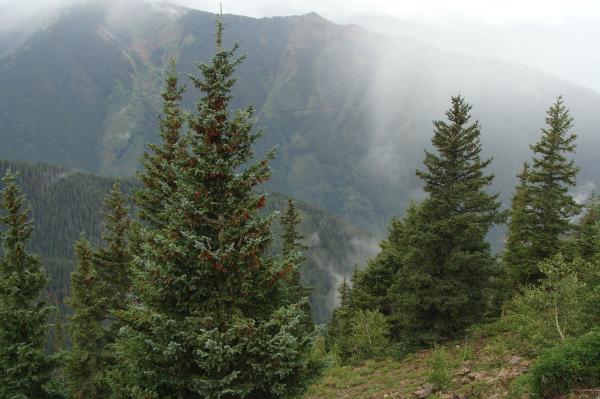TEHRAN, July 16 - A team of researchers have determined that the ability of North American forests to sequester, or soak up, carbon over the next 60 years is 22 percent -- in the best case scenario.
 TEHRAN, Young Journalists Club (YJC) -A team of researchers have determined that the ability of North American forests to sequester, or soak up, carbon over the next 60 years is 22 percent -- in the best case scenario.
TEHRAN, Young Journalists Club (YJC) -A team of researchers have determined that the ability of North American forests to sequester, or soak up, carbon over the next 60 years is 22 percent -- in the best case scenario.
Forests play a critical role in slowing the effects of climate change because trees absorb the carbon dioxide from the atmosphere as they grow and store the carbon in their wood.
The paper, published Friday in Nature Communications, integrates the natural process of forest growth and regeneration as well as climate changes that will likely alter that growth process. It's the first study of its kind to do so, and offers a valuable image showing the distribution of forests across the United States and Canada.
"There's a lot of hope that our forests will soak up the carbon dioxide we're producing, but the capacity of our forests is limited," lead researcher Kai Zhu, an assistant professor of environmental studies at the University of California in Santa Cruz, said in a press release.
The team found that North American forests have reached 78 percent of their capacity to absorb carbon. The finding has implications for forest managers, climate scientists and policy makers.
Previous attempts to quantify the capacity of forests to sequester carbon relied on simulation models or satellite data. But the research team instead took exhaustive measurements of forests across the continental U.S. and Canada.
The researchers analyzed data from 140,000 plots in the U.S. Forest Inventory and Analysis program and the Canada Permanent Sample Plots program to document the growth of forests in the past and project their growth into the future.
The team knew the forecast would not be accurate without accounting for climate change.
"To do a good job predicting the future, we have to consider both factors -- natural recovery and climate change that modifies growth -- because both are important biologically," Zhu said.
The model includes data from 2000-2016, as well as "hindcast" observations from 1990-1999. The team then predicted forest conditions under climate change in the 2020s, 2050s, and 2080s before calculating the extent to which current forest biomass approaches future biomass potential.
"We found that climate change effectively modifies the forest recovery trajectory, but the bigger factor is that overall forest growth is limited," he said.
Researchers call the findings the best-case scenario, which they have based on past forest performance and climate-change projections from the Intergovernmental Panel on Climate Change.
The assumption is that forests will continue to grow without many disturbances, but in reality, there will certainly be disturbances, such as disease outbreaks, wildfire and wind effects, and human-caused effects such as the loss of forests to development.
Disturbances will reduce forest biomass, so the actual forest capacity will likely be lower than the best-case scenario model, researchers say.
It's is the first time wall-to-wall ground-based data across North America was used, which provides a starting point to think about the future, Zhu said. It points to the need to protect North American forests and reduce deforestation elsewhere.
"Reducing deforestation in the tropics is much easier than expanding forests in North America," he said. "That option is very limited."
The team looked at the dramatic recovery of North American forests since the early 20th century and the removal of huge swaths to make way for agriculture in the Northwestern United States. The better soil in the Midwest led to abandonment of the cleared land, which led to the forests' recovery.
Source:UPI
 TEHRAN,
TEHRAN,